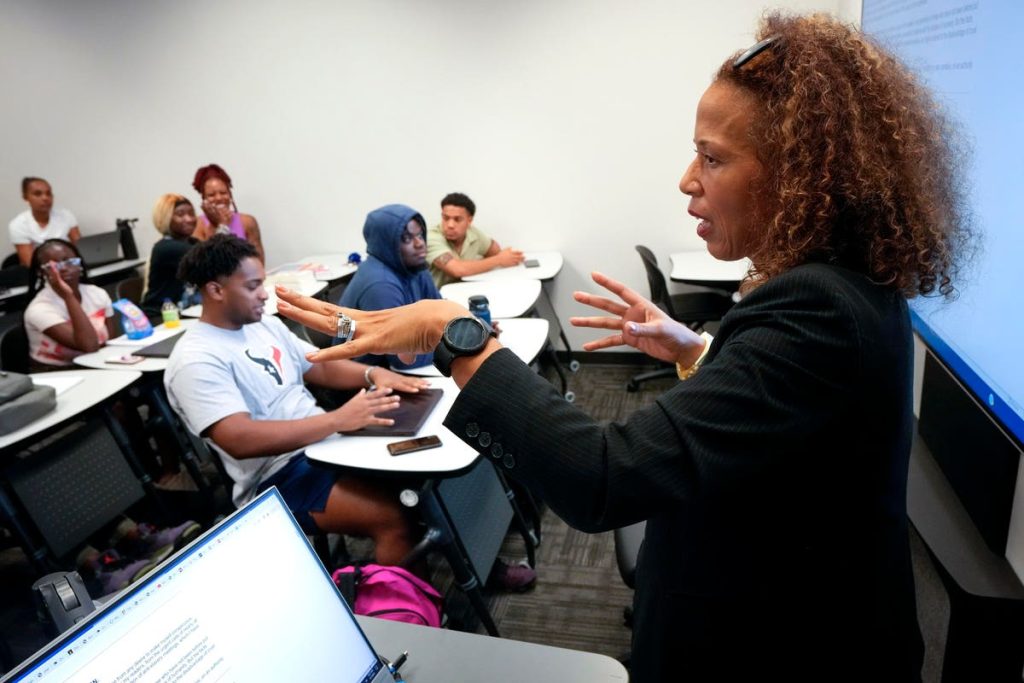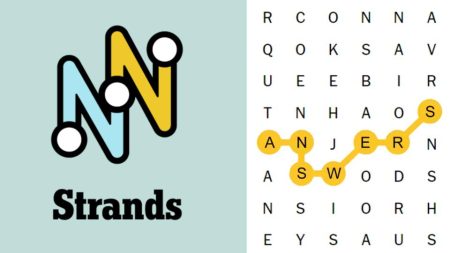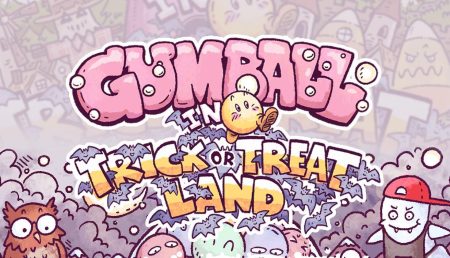Faculty update their courses to maintain relevance as disciplines evolve, enhance student engagement or a plethora of other reasons. They can now use generative AI tools to systematically review elements of an academic course, and if needed, revise them.
Using generative AI tools for a course refresh allows faculty to see curriculum elements from a new perspective, become acquainted with navigating AI platforms and be more apt to incorporate them in their courses. Equipping students with AI navigational skills will better prepare them for the job market after graduation.
Additionally, research by Quizlet reported that 67% of surveyed students agree that AI helps them study more efficiently, 73% said it helps them understand the material better and 42% reported that AI creates a more equitable learning environment.
Generative AI offers educators myriad advantages, ranging from administrative efficiency and enhanced pedagogical effectiveness to research opportunities and competitive positioning. Educators use generative AI tools for “research (44%), generating lesson plans (38%), summarizing or synthesizing information (38%), and generating classroom materials like tests and assignments (37%)” according to Quizlet.
Evaluating courses with generative AI requires an understanding of prompt engineering, a new discipline focused on codifying an interaction with large language models and a fundamental skill while working with AI. Based on what instructions or questions are entered, the educator may or may not get the expected answer.
There are various cheat sheets, videos and courses to help people leverage AI. Completing some of the training will aid instructors in writing better prompts for their course reassessment, however, diving into this process without preparation might also allow an educator to see the importance of experimenting and learning prompt engineering.
Instructors should first select a course to examine. It should be one in which the instructor has the flexibility to modify its elements— course objectives, topics, pedagogy, tools, policies and lessons — so the accepted modifications can be easier to implement, without waiting for the approval of others. Furthermore, if using ChatGPT, specifying custom instructions in settings, with the details of the type of course taught, the instructor role, style of writing and the audience for the content generated by the platform will clarify output expectations for AI and ChatGPT will return more precise answers.
1. Examining Current Course Objectives
Once the course is selected, a thorough review of its objectives begins. The aim is to ensure that they are current. If the instructor believes that they could be updated, the educator can copy and paste them into the AI platform, together with the course context– e.g., course description, level of the course and institutional setting– requesting the AI platform to offer suggestions. The instructor should critically evaluate and edit, as appropriate, all the suggestions provided by the platform. This process typically is iterative, at each step of the reassessment, refining the prompt to get a better answer. If fitting, the instructor might consider adding a course objective related to generative AI, and the platform is capable of helping formulate the new objective options.
2. Exploring Course Topics
Once the course objectives are in place, the faculty might examine the current course topics and if needed, ask generative AI if any content should be added, deleted or modified. With the understanding of course objectives and context, depending on the timeliness of the material studied in the course, as some of the generative AI platforms are limited by the training data through 2021, AI might suggest content revisions. The instructor should critically evaluate these suggestions and ask follow-up questions if necessary. Ultimately, course topics might or might not be adjusted based on the faculty assessment.
3. Considering Pedagogy
With the understanding of the objectives and topics covered in a course, educators should next reassess current instructional methods. Pedagogy is a crucial element in the success of any course, with a typical class often containing lectures, discussions, projects or tests. Variety enhances student attention and engagement, promoting a more holistic understanding of the material, where lectures or discussions are followed by practical application of the material.
The educator may want to share with the AI platform the current pedagogical approaches used and ask it to suggest other teaching methods, including teaching methods that use generative AI.
ChatGPT could, for example, help students generate ideas for projects, evaluate their ideas, help them outline and create first drafts of written projects, revise content for a specific audience, provide feedback on work according to a rubric, generate sample test materials to prepare for an exam, scaffold learning with progressively harder examples or present alternative viewpoints. Students could critique content produced by generative AI, have debates with an AI platform, work with a generative AI platform as a teammate, or have a prompt competition to solve a problem.
4. Investigating Additional Resources and Tools
After laying the groundwork for the course with the objectives, topics and pedagogy, the instructor should focus next on the resources required, including appropriate technology tools and generative AI tools. Asking the generative AI platform for resource recommendations might be helpful, however asking for generative AI tool recommendations would not produce good results, as these apps have only recently entered the market and AI might not be aware of them. A platform such as There Is An AI For That might be a better place to explore the variety of available tools. Aside from ChatGPT, Claude, Bing, and Bard, there is a plethora of helpful software to assist educators across disciplines, including those that can help students with research.
5. Developing A Syllabus Policy
Before implementing any generative AI in a course, educators should ensure that the plans comply with data privacy laws, ethical guidelines and institutional policies. It’s also essential to establish a clear line of accountability for the students in the course, explaining appropriate and inappropriate technology uses, thus avoiding potential academic dishonesty. A searchable document with sample AI policies for syllabi, created by an instructional designer Lance Eaton, is a good starting point in this process. Once an instructor finds a relevant sample policy, AI can help refine the language to fit the particular course.
6. Planning Lessons
Generative AI can also be an invaluable asset in lesson planning, allowing instructors to use its capabilities to create or revise individual course sessions. ChatGPT or Claude can assist in developing everything from lecture notes, presentations, quizzes, project descriptions, assignments, case discussions and grading rubrics. The goal is to provide materials that are both relevant and engaging for the students while meeting course objectives. The AI help also makes the work of instructors less burdensome, assisting with the tedious tasks and allowing educators to focus on the more intellectual or interpersonal aspects of teaching.
7. Intrinsically Motivating Students
Keeping students intrinsically motivated is an ongoing challenge in education. To address this, instructors can incorporate AI-driven elements that are specifically designed to engage students. This could be in the form of fun quizzes, personalized learning paths or interactive simulations. When prompted, generative AI tools can offer their perspectives on how to create a learning environment that gives students more autonomy, piques their interest and engages them.
The key to success is always using professional judgment when evaluating AI recommendations and probing deeper. Ultimately, we need to fundamentally rethink the way with teach to prepare our students for the collaborative future with AI, which will require faculty reskilling and funding.
Generative AI is more than just a technological innovation; it serves as a cornerstone for educational transformation. By adopting a structured and thoughtful approach to its integration into courses, educators are taking a significant step toward creating a more efficient and effective learning environment, benefiting themselves, the students and their programs.
Read the full article here










